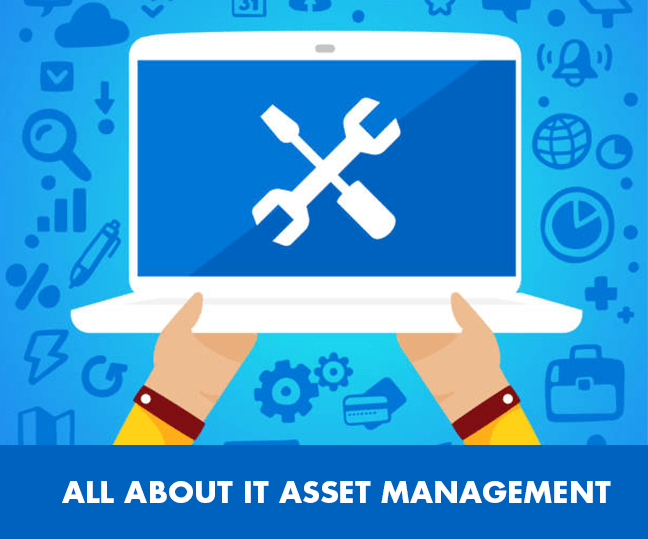An asset register is a comprehensive record-keeping system that tracks and manages an organization’s physical, financial, and non-financial assets. It provides a detailed inventory of all its assets and relevant information such as their location, condition, and value.
Maintaining an up-to-date register of assets has become essential for companies of all sizes and industries in today’s dynamic business environment. Not only does it help organizations keep track of their assets, but it offers several benefits, such as optimizing asset utilization, reducing maintenance costs, and improving decision-making. In this article, we’ll look at what an asset register is and explore the various benefits of maintaining one.
Related article: Asset Management Software For MSP
What is an Asset Register? What is the purpose of an Asset Register?
An asset register is a database or spreadsheet that contains information about the assets owned by an individual or an organization. Assets can be defined as anything that has value and can be used to generate income or benefit the owner in some way.
A register typically includes information such as the name and description of the asset, the date of purchase, the cost of acquisition, the estimated useful life of the asset, and the depreciation schedule. Additional information may include:
- The location of the asset.
- The condition of the asset.
- Any maintenance or repair history.
A Register of assets aims to provide an organized and systematic approach to managing assets. An organization can make informed decisions about asset acquisition, maintenance, and disposal by maintaining an accurate and up-to-date asset register. It can also help prevent asset loss or theft and ensure compliance with financial reporting requirements.
In addition, it can be used for insurance purposes. In the event of damage or loss, the asset register can provide proof of ownership and value, aiding the claims process. The following points states the purpose of asset registers,
- Tracking and Management: The asset register helps the company keep track of its assets, locations, and current status. This information can easily be found in the asset register if a machine needs to be serviced or replaced.
- Financial Reporting: Financial information is crucial for financial reporting. When preparing financial statements, companies can accurately report the current value of their assets, which affects the company’s balance sheet and tax obligations.
- Maintenance and Lifecycle Management: This allows the company to manage the lifecycle of its assets productively. They can schedule maintenance to avoid unexpected breakdowns and plan replacements before the trucks become too costly.
- Compliance and Risk Management: A register ensures a company meets regulatory and safety standards, reducing the risk of penalties, legal issues, or accidents by keeping detailed records of inspections and certifications.
- Budgeting and Investment: The register helps make informed decisions about future investments. It ensures that the company budgets appropriately for asset replacements and upgrades, leading to better financial planning and optimal resource use.
A register of assets is a crucial tool for any organization. It helps with asset management, financial reporting, maintenance scheduling, compliance, and strategic planning. Companies can ensure their assets are appropriately managed by maintaining an accurate and up-to-date.
Benefits of Maintaining an Asset Register
Maintaining an asset register offers numerous benefits to an organization, some of which are discussed below:
- Improved Asset Tracking: It provides a comprehensive and organized record of all assets within an organization, detailing each asset’s location, condition, and usage. This systematic tracking helps ensure that assets are not lost or misplaced and are utilized accurately. It allows for quick information retrieval about any asset, streamlining operations and improving accountability.
- Accurate Financial Reporting: A register supports accurate financial reporting by documenting the acquisition cost, depreciation, and current value of assets. It provides essential data for preparing financial statements, managing depreciation, and performing audits. This precision ensures that financial reports reflect the actual value of assets, aiding in financial planning and compliance with accounting standards.
- Enhanced Maintenance Scheduling: This includes detailed records of maintenance schedules and service history. This information enables organizations to plan and execute regular maintenance tasks, preventing unexpected equipment failures and extending the useful life of assets. Proactive maintenance scheduling helps avoid costly repairs and reduces downtime, ensuring continuous and smooth operations.
- Informed Budgeting and Investment: A register provides valuable insights into asset condition, value, and lifespan. This information supports informed budgeting and investment decisions by identifying assets needing replacement or upgrading. Productive asset management ensures that resources are appropriately allocated, aligning with the organization’s financial and strategic goals.
- Enhanced Security and Loss Prevention: It helps enhance security and prevent loss by maintaining detailed records of each asset’s location, ownership, and usage. Tracking who is responsible for each asset and where it is stored reduces theft or unauthorized access. Effective asset tracking supports loss prevention strategies and improves overall asset security.
- Support for Strategic Planning: Detailed asset information in the register supports long-term strategic planning by offering insights into asset performance and condition. This data helps organizations plan for growth, expansions, and new projects by clearly understanding current asset capabilities and future needs. Strategic planning based on accurate asset data ensures better alignment with organizational goals.
- Better Insurance Management: A register helps manage insurance coverage by providing accurate records of all insured assets, including their value and condition. This ensures the organization has adequate insurance coverage for its assets and avoids overpaying premiums. It also simplifies the process of filing insurance claims by providing detailed documentation of asset information.
- Enhanced Audit Readiness: An organized register of assets ensures that all asset-related documentation is readily available and well-maintained, facilitating a smooth and efficient audit process. It provides auditors with accurate and comprehensive information about asset management, including acquisition records, depreciation schedules, and maintenance histories. This readiness enhances the credibility of the organization’s financial reports and supports compliance with auditing standards.
Fixed Assets vs. Digital Assets
Fixed Assets:
Fixed assets are long-term tangible assets used in producing goods and services. This category includes physical items such as buildings, machinery, vehicles, and office equipment. They provide lasting value to the organization, supporting daily operations and long-term capital planning. Fixed assets are crucial for maintaining business operations and are typically subject to depreciation over time.
Digital Assets:
Digital assets are intangible assets that exist in digital form and are managed electronically. This includes intellectual property (like patents and trademarks), software, digital media, and financial investments in digital formats.
Digital assets hold value and can impact business operations through their intellectual and financial contributions. They are essential for managing digital resources, protecting intellectual property, and ensuring compliance with digital asset regulations.
Key Differences:
- Tangible vs. Intangible: Fixed assets are physical and tangible, while digital assets are intangible and exist in digital form.
- Depreciation vs. Amortization: Fixed assets are depreciated over their useful life, whereas digital assets, especially software, may be amortized.
- Management Focus: Fixed assets focus on physical maintenance and lifecycle management, whereas digital assets focus on protection, compliance, and digital resource management.
Understanding these differences helps organizations manage their asset portfolios excellently, addressing the distinct needs of tangible and digital resources.
The Different Types of Asset Registers
Asset registers help manage and track the assets, including their value, location, and maintenance requirements. There are several asset registers, each with its purpose and use case.
- Financial Asset Register: A financial register of assets is a document that contains a list of financial assets, such as mutual funds, stocks, and bonds. It aims to help manage and track investments, including their value, performance, and risks.
- Fixed Asset Register: A fixed asset register is a document that contains a list of fixed assets, such as buildings, vehicles, and machinery. Its purpose is to help manage and track these assets, including their value, depreciation, and maintenance requirements.
- IT Asset Register: An IT register of assets contains a list of IT assets, such as computers, software, and servers. It aims to help manage and track these assets, including their value, maintenance requirements, and software licenses.
- Property Asset Register: A property asset register contains a list of property assets, such as land, buildings, and rental properties. Its purpose is to help manage and track these assets, including their value, rental income, and maintenance requirements.
- Consumable Asset Register: A consumable asset register is a document that contains a list of consumable assets, such as office supplies, cleaning materials, and fuel. It aims to help manage and track the use and replenishment of these assets.
- Intellectual Property Asset Register: An intellectual property asset register is a document that contains a list of intellectual property assets, such as trademarks, patents, and copyrights. Its purpose is to help manage and track these assets, including their value, expiration dates, and renewal requirements.
The asset register used will depend on the type of assets being managed and the organization’s or individual’s specific needs. Maintaining an accurate asset register allows for dynamic asset management and tracking, ensuring their value is maximized, adequately maintained, and used.
Related blog: The Ultimate Guide to IT Asset Management: A Step-by-Step Checklist
How to create an Asset Register?
Creating a register involves several vital steps to accurately record and manage all assets. Here’s a detailed guide:
- Define the Scope and Objectives: Determine the purpose of the asset register and what types of assets will be included (e.g., physical, intangible). Define the goals, such as tracking asset usage, managing maintenance, or ensuring regulatory compliance.
- Inventory Assets: Conduct a comprehensive inventory of all assets. This includes physical assets like machinery, vehicles, and office equipment, as well as intangible assets such as software licenses and patents. Gather information such as asset names, locations, and conditions.
- Categorize Assets: Organize assets into categories based on type, function, or department. This helps manage and track assets more accurately. Categories might include machinery, vehicles, computers, furniture, and intellectual property.
- Collect Detailed Information: For each asset, collect detailed information, including:
- Description: A brief description of the asset.
- Unique Identifier: Serial number, barcode, or asset tag.
- Location: Where the asset is located.
- Acquisition Date: When the asset was purchased or acquired.
- Cost: Purchase cost or value.
- Depreciation: Method and schedule for depreciation.
- Condition: Current state of the asset.
- Maintenance History: Records of repairs and servicing.
- Choose a Recording Method: Decide whether to use a manual system (e.g., spreadsheets) or asset management software. Asset registers offer more advanced features like automated tracking, reporting, and integration with other systems.
- Input Data: Enter the collected asset data into the Asset register software. Ensure that all fields are accurately filled and that the data is complete.
- Implement a Tracking System: Set up a system for ongoing tracking and updates. This includes regular checks and updates to ensure the asset register remains accurate. Implement procedures for recording new acquisitions, disposals, and changes in asset status.
- Establish Maintenance and Review Procedures: Develop procedures for regularly reviewing and updating the asset register. This includes scheduling periodic audits, updating new acquisitions or disposal records, and ensuring accurate depreciation calculations.
- Train Staff: Train staff responsible for managing and maintaining the asset register. Ensure they understand how to use the system, input data, and follow procedures.
- Monitor and Improve: Monitor the asset register and make necessary improvements. Collect user feedback, address issues, and update procedures to enhance accuracy and performance.
How to Maintain an Asset Register?

Proper register maintenance is essential for ensuring that asset information remains accurate and up-to-date. Here are key strategies for maintaining an asset register:
- Regular Updates: Continuously update the register to reflect new acquisitions, disposals, transfers, and changes in asset status. This keeps the register accurate and current, preventing discrepancies and outdated information.
- Routine Audits: Conduct periodic physical audits to verify the presence and condition of assets against the records. This helps identify and correct discrepancies between physical assets and recorded data, ensuring accuracy.
- Standardized Procedures: Implement standardized data entry, updating, and record-keeping procedures. This will reduce errors and maintain consistency in asset management practices.
- Staff Training: Train staff on proper asset management practices, including data entry, maintenance procedures, and compliance requirements. This ensures knowledgeable and skillful staff members manage and maintain accurate asset records.
- Use of Technology: Employ asset management software to automate tracking, updates, and reporting. This enhances accuracy and real-time access to asset information, reducing manual errors.
- Verification Processes: Establish verification processes for cross-checking data entries and confirming accuracy. This helps prevent and address errors or inconsistencies in asset records.
- Clear Documentation: Maintain thorough documentation for each asset, including purchase details, maintenance records, and disposal information. This supports accurate record-keeping and provides a comprehensive history of each asset.
- Periodic Reviews: Regularly review and reconcile the asset register with financial reports and other records. This ensures alignment between asset records and financial statements, supporting accurate financial reporting and planning.
By following these practices, organizations can maintain an accurate asset register, improving asset management, compliance, and operational performance.
By ensuring the accuracy of the asset register through these methods, organizations can enhance financial reporting, compliance, and operational efficiency while reducing risks associated with asset management.
Related article: Why IT Asset Management (ITAM) Is Important and Its Benefits
To Conclude:
In conclusion, an asset register is essential for competitive asset management. It provides a comprehensive record of both tangible and intangible assets. It enhances tracking, supports maintenance planning, reduces the risk of loss or theft, and ensures regulatory compliance. Organizations can improve performance, cut costs, and boost accountability by maintaining an accurate and up-to-date asset register.



















